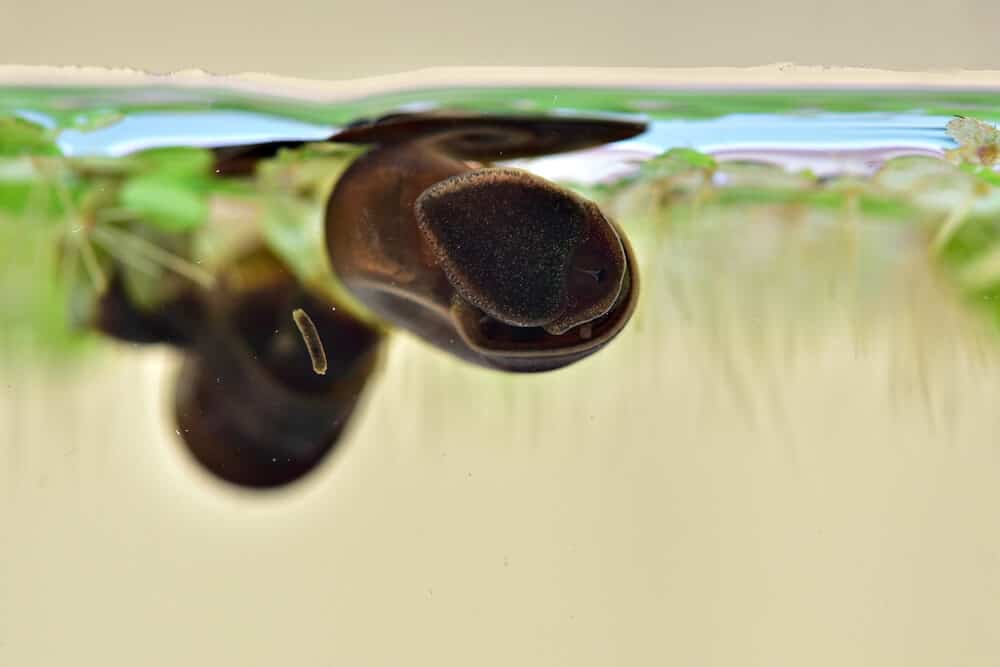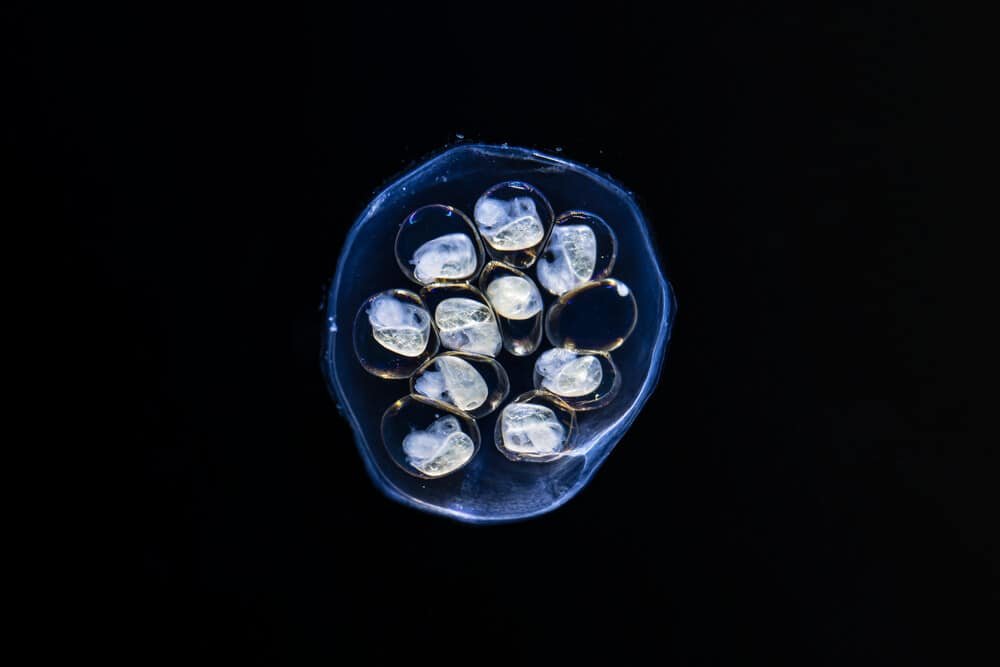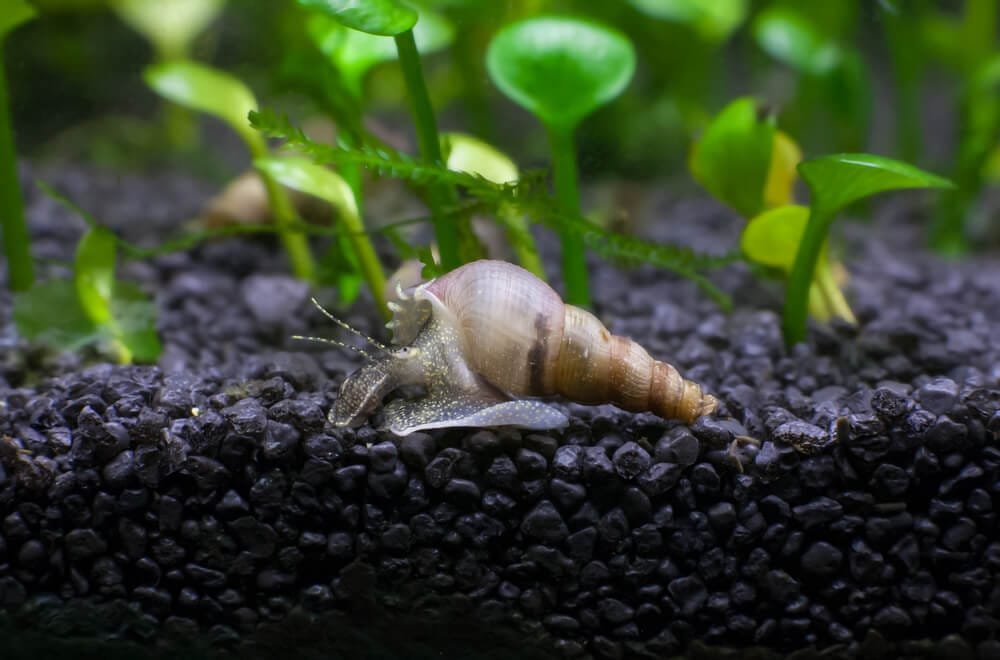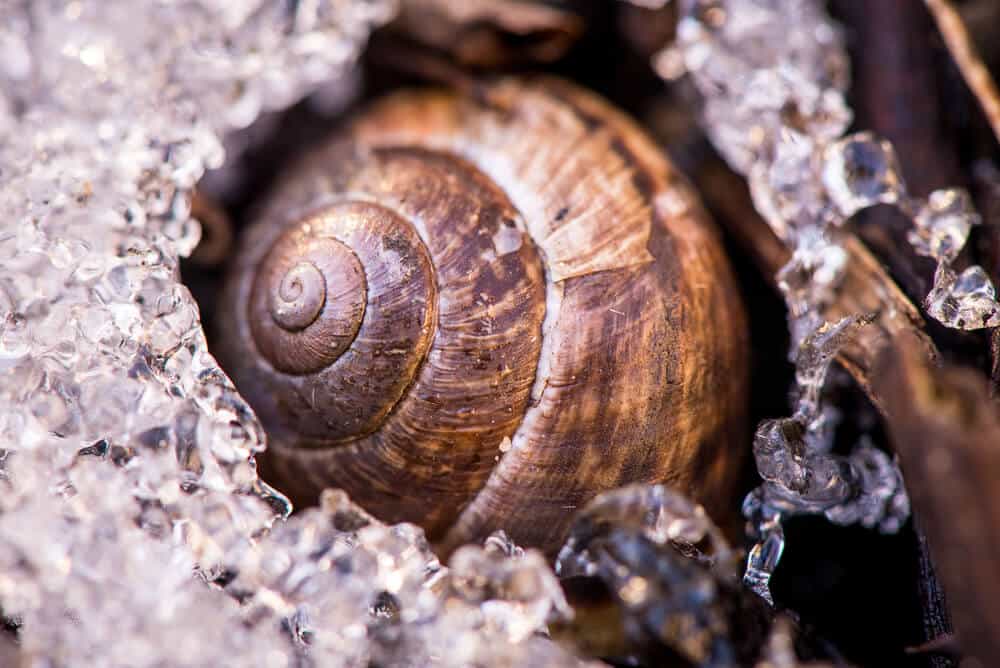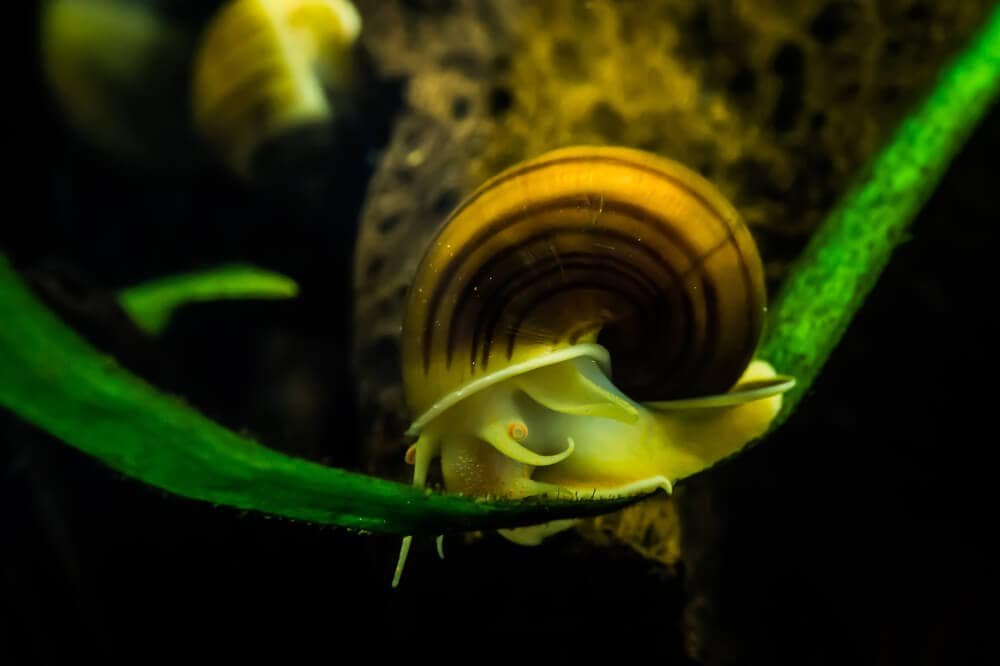Ramshorn Snail Care Guide and Essential Tips
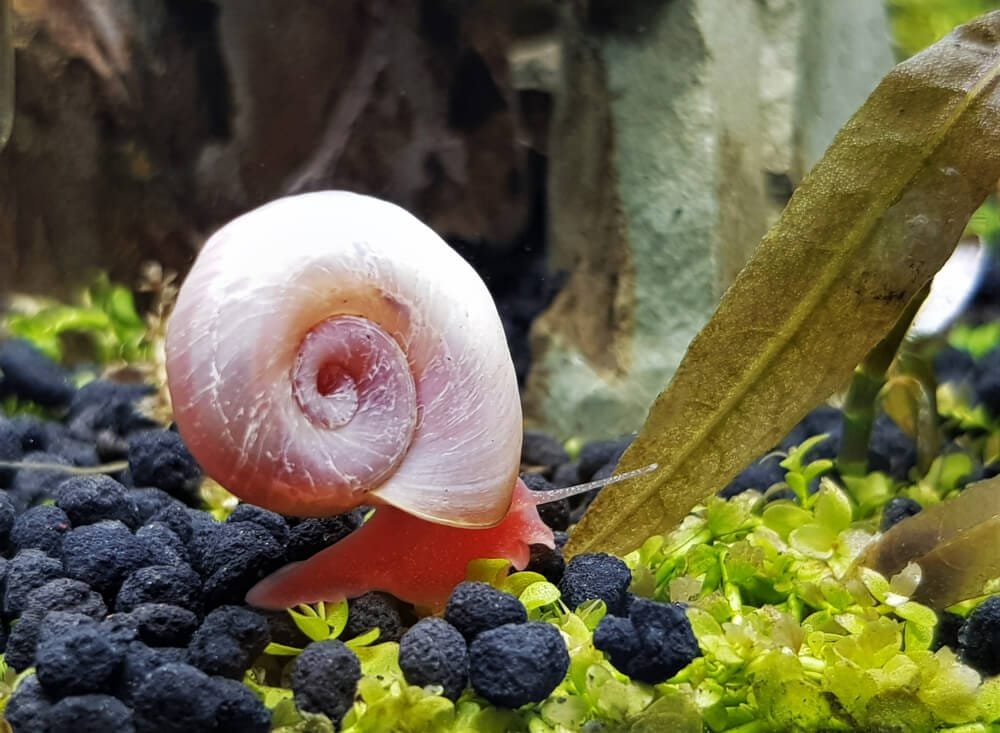
If you’re a fan of unique and fascinating aquatic creatures, then Ramshorn Snails might just be your new favorite addition to your tank. These captivating snails come in a range of beautiful colors and have distinctive spiral shells that are sure to catch your eye.
In addition to their striking appearance, Ramshorn Snails are also known for their relatively easy breeding and low-maintenance tank needs. Whether you’re a beginner or an experienced aquarium enthusiast, this article will provide you with all the essential information you need to know about these incredible snails, from their characteristics to their breeding habits and how to keep their tank in top shape.
Characteristics of Ramshorn Snails
Appearance
Ramshorn snails are small aquatic gastropods with a unique and interesting appearance. Their shell resembles a coiled spiral, resembling a ram’s horn, hence their name. These snails can grow to be about 1-2 inches in size, although some varieties may grow larger. They have a soft body and a flat, shield-shaped shell that is translucent and often has a reddish or brownish hue. Overall, they have a sleek and graceful appearance, making them a popular choice for aquarium enthusiasts.
Size
Ramshorn snails are relatively small in size compared to other snail species. On average, they grow to be about 1-2 inches in length, with some varieties growing slightly larger. Their compact size makes them suitable for smaller tanks, and they can easily navigate through tight spaces and crawl on various surfaces within the aquarium.
Shell Colors
Ramshorn snails come in a variety of shell colors, adding vibrancy and diversity to your aquarium. Common colors include shades of red, brown, and even pink. Some snails may have a more vibrant and intense color, while others may have a more muted or translucent appearance. The shell coloration can vary depending on factors such as diet, genetics, and overall health. This variation in shell colors allows aquarium enthusiasts to choose snails that complement the aesthetics of their tank.
Behavior
Ramshorn snails are generally peaceful and docile creatures, making them suitable for community aquariums. They move at a slow and steady pace, gliding across the substrate and various surfaces in the tank. These snails are known to be excellent algae eaters, and they can help maintain a clean and healthy aquarium environment. Additionally, they are known to be scavengers, feeding on leftover food and decaying organic matter. Despite their small size, ramshorn snails play an important role in the ecosystem of the tank.
Feeding Habits
Ramshorn snails are omnivores, meaning they have a varied diet that consists of both plant matter and small invertebrates. Their primary diet includes algae, detritus, and decaying organic matter in the tank. They use their radula, a specialized feeding organ, to scrape off algae from surfaces and consume it. While they primarily feed on algae, it is important to supplement their diet with additional sources of nutrition. Commercial snail foods, blanched vegetables, and sinking pellets are excellent options to ensure they receive a balanced diet.
Tank Setup
Choosing the right tank size
When setting up a tank for your Ramshorn snails, it is important to consider the right tank size. Ramshorn snails are relatively small and can live comfortably in a tank as small as 5 gallons. However, providing them with a larger tank, such as a 10-gallon or even a 20-gallon tank, will give them more space to explore and thrive. It is essential to ensure that the tank is properly equipped with a secure lid to prevent them from escaping.
Providing suitable substrate
Ramshorn snails require a substrate in their tank that mimics their natural habitat. A soft and fine-grained substrate, such as sand or fine gravel, is ideal for these snails. This type of substrate allows them to burrow and forage comfortably. Avoid using sharp or coarse substrates that may cause damage to their delicate bodies.
Decorating with plants and hiding spots
To create a suitable environment for your Ramshorn snails, it is important to decorate their tank with live plants and provide them with hiding spots. Live plants not only add beauty to the tank but also serve as a source of food and shelter for the snails. Ensure that the plants you choose are compatible with the water conditions required by Ramshorn snails. Additionally, provide various hiding spots, such as caves or pieces of driftwood, where the snails can retreat to when they feel the need for privacy or protection.
Maintaining the water parameters
Maintaining proper water parameters is crucial for the health and well-being of your Ramshorn snails. The ideal water temperature for these snails ranges from 70°F to 78°F. It is important to regularly check the temperature of the water and make adjustments if necessary. Additionally, monitor the pH levels of the water, which should be in the range of 7.0 to 7.5, and make any necessary adjustments to maintain stability. Finally, ensure that the water is properly filtered and regularly test for ammonia, nitrite, and nitrate levels to keep them within safe ranges for your snails.
Feeding
Understanding the dietary needs
Proper nutrition is essential for the overall health and growth of your Ramshorn snails. These snails are omnivores and require a balanced diet to thrive. Their diet should include both plant matter and protein-rich foods. Algae, decaying plant matter, and blanched vegetables, such as spinach or zucchini, are excellent sources of nutrition for them. Additionally, providing them with high-quality sinking pellets or flakes specifically formulated for snails will ensure they receive the necessary nutrients.
Offering a variety of food
To ensure a healthy and varied diet for your Ramshorn snails, it is important to offer them a variety of food options. Rotate their meals by offering different types of blanched vegetables and algae, as well as commercial snail food. This will provide them with a range of nutrients and prevent them from getting bored with their food.
Avoiding overfeeding
Overfeeding can lead to water quality issues and adversely affect the health of your Ramshorn snails. It is important to offer them small amounts of food at a time and remove any uneaten food within a couple of hours. This will help maintain good water quality and prevent the accumulation of excess food in the tank.
Supplementing with calcium
Ramshorn snails require calcium for the growth and maintenance of their shells. Providing them with a calcium-rich diet is crucial to prevent shell deformities and maintain their overall health. Adding a cuttlebone or crushed eggshells to the tank can provide a natural and readily available source of calcium for your snails.
Water Quality
Managing ammonia and nitrite levels
Ammonia and nitrite are harmful to aquatic life, including Ramshorn snails. These toxic substances can result from the decomposition of organic matter in the tank. To ensure the well-being of your snails, it is important to regularly test the water for ammonia and nitrite levels and take appropriate measures to keep them at safe levels. This can include performing regular water changes, adjusting the feeding regimen, and maintaining a clean and well-filtered tank.
Monitoring nitrate levels
While lower levels of nitrates are generally safe for Ramshorn snails, high nitrate levels can be detrimental to their health. Regularly monitor the nitrate levels in the tank and take appropriate measures, such as adjusting the feeding and maintenance schedule, to keep the levels within acceptable ranges. Performing routine water changes can also help to reduce nitrate accumulation.
Controlling pH levels
Ramshorn snails prefer a slightly alkaline environment, with a pH range of 7.0 to 7.5. Regularly test the pH levels in the tank and make adjustments if necessary. Adding pH buffers or using natural methods, such as adding crushed coral or almond leaves, can help maintain stable pH levels for your snails.
Maintaining proper temperature
Maintaining a stable temperature within the recommended range of 70°F to 78°F is crucial for the health and well-being of your Ramshorn snails. Sudden temperature fluctuations or exposure to extreme temperatures can be stressful and potentially harmful to them. Use a reliable aquarium heater and regularly monitor the temperature to ensure it remains within the appropriate range.
Tank Mates
Choosing compatible tank mates
When adding tank mates to your Ramshorn snail’s aquarium, it is important to choose species that are compatible with them. Avoid keeping them with aggressive or larger fish that may pose a threat to the snails. Good tank mates for Ramshorn snails include peaceful community fish, such as small tetras, guppies, or rasboras. Additionally, introducing other small snail species, such as Malaysian Trumpet Snails or Nerite Snails, can create a harmonious and balanced ecosystem.
Avoiding aggressive species
Aggressive fish species, such as cichlids or larger predatory fish, may see Ramshorn snails as potential prey or target their delicate bodies. It is crucial to avoid keeping them with such aggressive species to ensure the safety and well-being of the snails. Always research the temperament and compatibility of potential tank mates before introducing them to the same aquarium.
Considering preferred water conditions
When selecting tank mates for Ramshorn snails, considering their preferred water conditions is essential. Ramshorn snails prefer slightly alkaline water with stable pH levels. Choose species of fish or other snails that thrive in similar water parameters to create a harmonious and stable environment for all inhabitants of the tank.
Monitoring for signs of aggression
Even with carefully selected tank mates, it is important to closely monitor the tank for any signs of aggression. Some fish may display territorial behavior or may become aggressive towards the snails. If any signs of aggression are observed, it may be necessary to remove the aggressive fish from the tank to ensure the safety and well-being of the Ramshorn snails.
Breeding Ramshorn Snails
Determining the Gender
Determining the gender of ramshorn snails can be challenging due to their internal reproductive organs. However, there are some indicators that can help identify the sexes. Male snails often have a slightly longer and narrower shape compared to females. Additionally, they may have a more pronounced and curved tip on their shells. Female snails, on the other hand, tend to have a rounder and wider shape. It is worth noting that ramshorn snails are hermaphroditic, meaning they possess both male and female reproductive organs.
Mating Process
Ramshorn snails reproduce sexually, although they also have the ability to self-fertilize. During the mating process, two snails will align themselves with their shells facing each other. They will then extend a specialized reproductive organ called the “penis” to transfer sperm to the female’s reproductive opening. After mating, the female snail will store the sperm and fertilize her eggs internally. This unique reproductive strategy allows ramshorn snails to reproduce rapidly and increase their population size.
Egg Laying of Ramshorn Snails
Once fertilized, female ramshorn snails will begin to lay eggs. These eggs are small, translucent capsules that are typically attached to surfaces such as plants, rocks, or the aquarium glass. Each capsule contains multiple developing embryos. Depending on the temperature and environmental conditions, it can take anywhere from a few days to a few weeks for the eggs to hatch. It is important to note that ramshorn snails are prolific breeders, and if conditions are favorable, their population can quickly multiply.
Hatching of Ramshorn Snail Eggs
After the incubation period, the ramshorn snail eggs will hatch, and tiny baby snails will emerge. These juvenile snails are miniature versions of their adult counterparts and have the same spiral shape. They will initially feed on leftover yolk from their egg capsules until they are mature enough to consume other food sources. It is essential to provide them with a suitable diet and ensure the tank environment is conducive to their growth and development.
Growth and Development of Baby Ramshorn Snails
As the baby ramshorn snails grow, they will gradually develop their shells and increase in size. It is important to provide them with ample food sources and ensure they have a well-maintained tank environment. Regular water changes and proper filtration will aid in their growth and overall well-being. With proper care, baby ramshorn snails can reach maturity in a matter of months and contribute to the overall balance and biodiversity of the aquarium.
Cleaning and Maintenance
Performing regular water changes
Regular water changes are vital for maintaining good water quality in your Ramshorn snail’s tank. Aim to perform weekly or bi-weekly water changes to remove accumulated waste, excess nutrients, and potentially harmful substances. Use a siphon to remove debris from the substrate and replace the water with treated, dechlorinated water that matches the appropriate temperature and pH levels.
Siphoning debris from the substrate
The substrate of your Ramshorn snail’s tank can trap uneaten food, waste, and other debris over time, affecting water quality. Regularly siphon the substrate using a dedicated aquarium vacuum or gravel cleaner to remove any accumulated waste. Doing this during water changes will help maintain a clean and healthy environment for your snails.
Pruning and maintaining live plants
Live plants not only add beauty to the tank but also provide essential oxygen and serve as a natural filtration system. Regularly prune and maintain the live plants in the tank to prevent overcrowding and excessive nutrient absorption. Remove any dead or decaying plant matter to maintain water quality and prevent the accumulation of organic waste.
Cleaning tank equipment
Regularly clean and maintain the equipment in your Ramshorn snail’s tank to ensure its proper functioning and longevity. This includes cleaning the aquarium filter, heater, air pump, and any other equipment you may have. Follow the manufacturer’s instructions for cleaning and maintenance or consult with a knowledgeable professional to ensure that you are cleaning the equipment properly without causing any damage.
Common Health Issues
Identifying signs of poor health
It is important to be able to recognize signs of poor health in your Ramshorn snails to address any issues promptly. Some common signs of poor health include decreased activity, loss of appetite, lethargy, excessive mucus production, shell damage, or unusual coloration. Regularly observe your snails and monitor their behavior and appearance to catch any potential health issues early.
Dealing with overpopulation
Ramshorn snails are prolific breeders, and if not managed, their population can quickly become overwhelming. To prevent overpopulation, it is important to separate adults from the eggs and remove excess snails as needed. You can manually remove extra snails from the tank or consider introducing natural predators, such as assassin snails or certain fish species that feed on snails, to help control the population.
Treating shell damage or shell deformities
Shell damage or deformities can occur due to various factors, including poor water quality, calcium deficiency, or physical trauma. If you notice any cracks, holes, or abnormalities in your Ramshorn snail’s shell, it is important to address the underlying cause and provide proper care. Maintaining stable water conditions, offering a calcium-rich diet, and providing a stress-free environment can help promote the healing and growth of healthy shells.
Preventing and treating infections
Ramshorn snails are generally hardy and resistant to diseases. However, they can still be susceptible to bacterial or fungal infections, especially if the water quality is poor or if there are other stressors present in the tank. Maintaining good water quality, providing a clean and well-maintained environment, and addressing any potential sources of stress can help prevent infections. If an infection does occur, it is important to promptly quarantine the affected snail and consult with a veterinarian or experienced aquatic professional for appropriate treatment options.
Handling and Care
Using proper handling techniques
When handling Ramshorn snails, it is important to use gentle and careful techniques to avoid injuring them. Avoid squeezing or applying excessive pressure on their shells, as this can cause damage or potential harm. Instead, gently scoop them up or allow them to glide onto your hand or a soft surface. Always wash your hands thoroughly before and after handling them to prevent the transmission of harmful substances or pathogens.
Avoiding stress and injury
Ramshorn snails are sensitive to sudden changes, stressful conditions, or injury. Minimize unnecessary disturbances or sudden movements around the tank to prevent unnecessary stress. Avoid exposing the snails to extreme temperatures or introducing them to aggressive tank mates that may harm or stress them.
Protecting the snail’s delicate body
Ramshorn snails have delicate bodies, including their shells and soft tissues. It is important to handle them with care and avoid any actions that may cause damage. When cleaning the tank or performing maintenance tasks, be mindful of their presence and take precautions to prevent accidental injury.
Preventing escape from the tank
Ramshorn snails are skilled climbers, and if their tank is not properly secured, they may attempt to escape. Ensure that the tank has a secure lid or cover to prevent the snails from crawling out. Check the tank regularly for any gaps or openings that may allow the snails to escape and make the necessary adjustments to keep them safely contained.
Recognizing Different Types of Ramshorn Snails
Identifying the common types
Ramshorn snails come in various shapes, sizes, and colors. The most common types of Ramshorn snails include the Brown Ramshorn Snail (Planorbarius corneus), the Red Ramshorn Snail (Planorbella duryi), and the Blue Ramshorn Snail (Planorbarius purpura). These snails are easily distinguishable by their shell coloration, which can range from brown, red, or blue.
Understanding color variations
Ramshorn snails can exhibit different color variations within their respective species. These color variations can be influenced by various factors, including genetics, diet, and environmental conditions. It is important to note that color variations do not necessarily indicate a different species but rather natural variability within a particular type of Ramshorn snail.
Differentiating between species
While the shell coloration is often used to differentiate between Ramshorn snail species, it may not provide a definitive identification. Additional characteristics, such as the shape of the shell or the presence of distinct markings, may also play a role in distinguishing between different species. If you are unsure about the specific type of Ramshorn snail you have, consulting with an experienced aquarist or referring to reliable identification resources can help provide the correct identification.
Appreciating the beauty of different shells
Ramshorn snails are renowned for their beautiful and unique shells. They can exhibit various patterns, textures, and colors, adding aesthetic appeal to any aquarium. Take the time to appreciate the subtle details and intricacies of their shells, as well as the diversity of appearances that Ramshorn snails can exhibit.
Troubleshooting Common Problems
Addressing issues with excessive algae growth
While Ramshorn snails can be beneficial in controlling algae growth, excessive algae can become a problem if not properly managed. To address issues with excessive algae growth, it is important to identify the underlying cause, such as imbalances in lighting, nutrient levels, or water parameters. Adjust the lighting duration and intensity, ensure appropriate nutrient levels through proper filtration and feeding practices, and maintain stable water conditions to prevent excessive algae growth.
Dealing with snail population explosions
Ramshorn snails are known for their ability to reproduce rapidly, which can lead to population explosions if not managed. To deal with snail population explosions, it is important to implement population control measures, such as regularly removing excess snails, introducing natural predators, or adjusting feeding practices to prevent overfeeding. Finding a balance between population control and maintaining a healthy snail population is key in managing this issue.
Solving odor problems in the tank
Foul odors in the tank can be indicative of poor water quality or the presence of decaying organic matter. To solve odor problems, it is important to address the underlying causes. Perform routine maintenance tasks, such as regular water changes and substrate cleaning, to remove accumulated waste. Ensure that the tank is properly filtered and test the water parameters regularly. If the odor persists, consult with a knowledgeable professional to identify and resolve the issue.
Resolving water cloudiness
Cloudy water in the tank can be caused by a variety of factors, including excess nutrients, overfeeding, or the presence of bacteria or other microorganisms. To resolve water cloudiness, start by identifying and addressing the underlying cause. Adjust feeding practices, perform water changes, and ensure proper filtration and maintenance to restore water clarity. If the cloudiness persists despite these measures, consult with a knowledgeable professional for further guidance.
